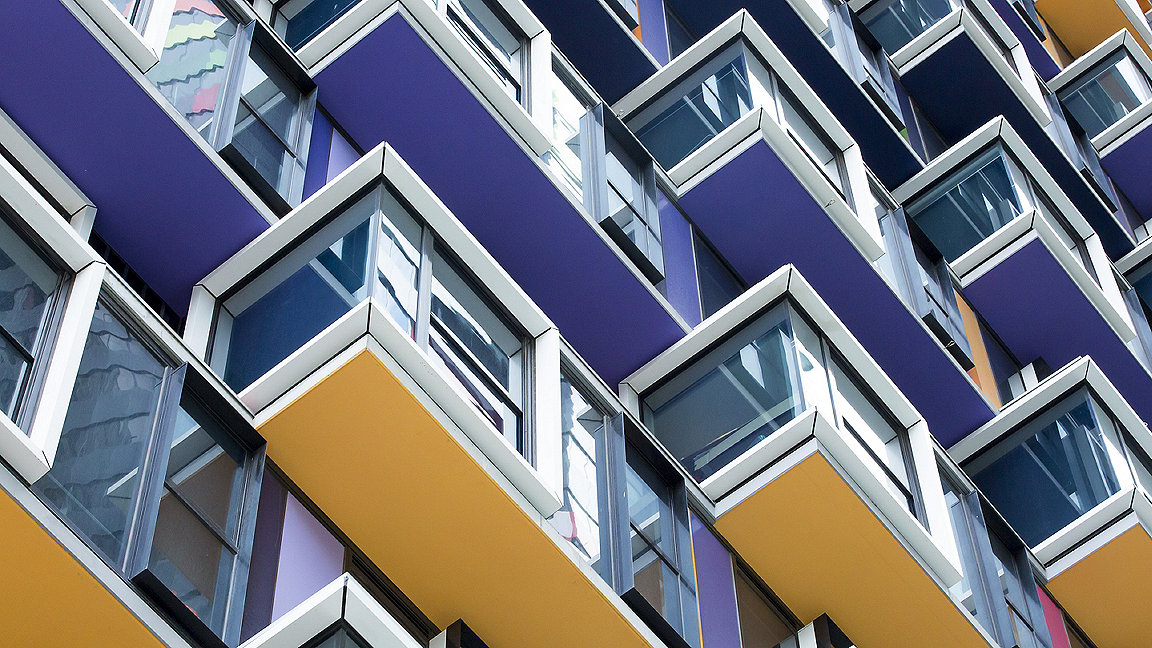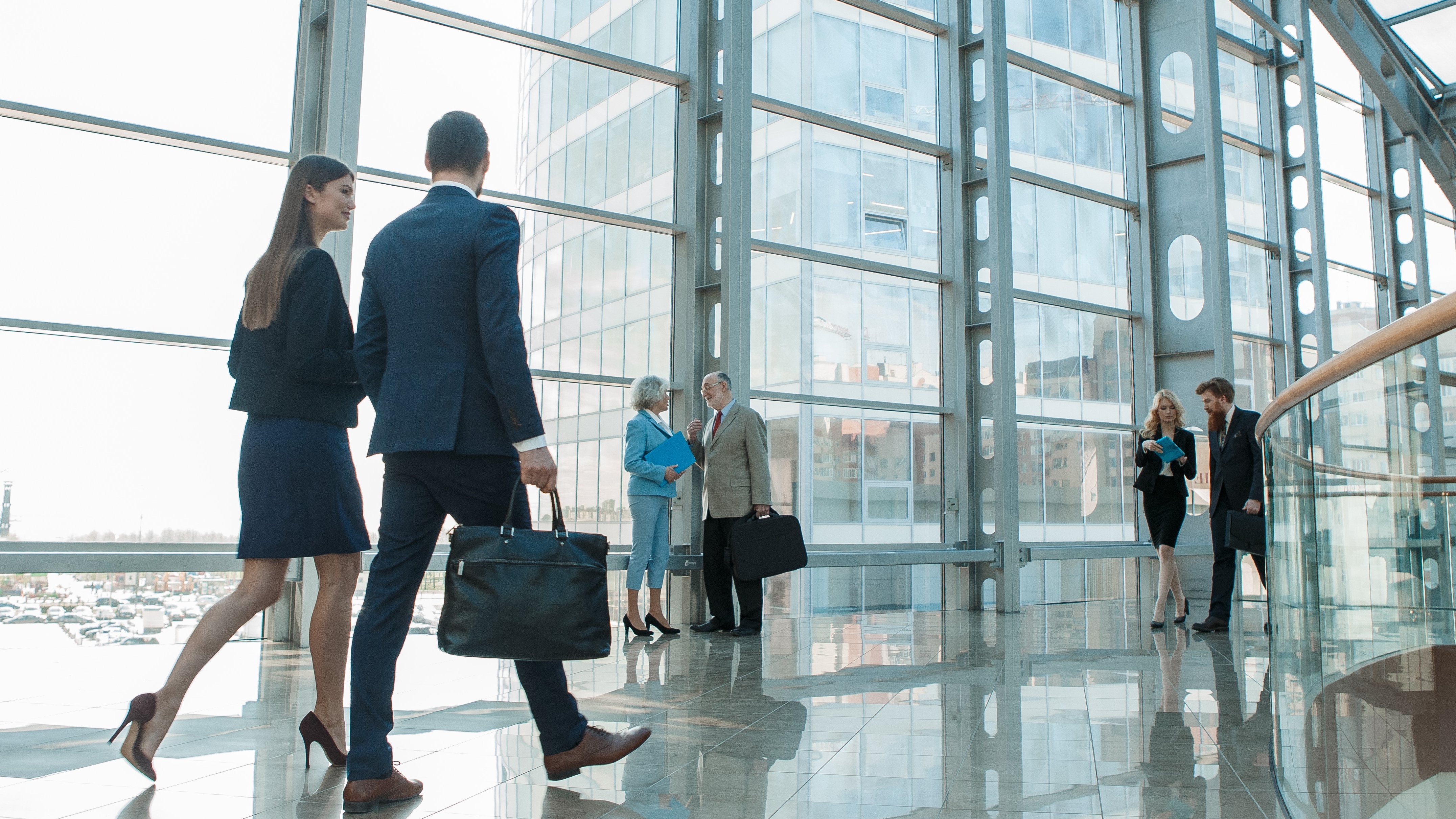
Inflation, soaring energy prices and increased operational costs are all currently threatening property investment. At the same time, new builds must demonstrate their worth by being socially viable – whether by improving urban spaces or attending to occupant experience – as well as environmentally viable, meeting stringent standards and climate targets.
Inaction now could jeopardise the sector's ability to adapt. Smart buildings – those that use the internet of things (IoT), AI, automation and digitisation – offer the best means of doing so, improving occupant experience and productivity. More importantly, smart buildings offer environmental and financial benefits that are essential to the success of businesses' long-term strategies.
Improved comfort enables productivity
With 25.7% of the UK workforce in professional jobs, the office is the most common workspace in the country (even in 2020 during the COVID-19 pandemic, a minority of 37% of people worked from home) and the average worker will spend around 3,500 days there in their lifetime. It's natural, then, that the office building should be geared as much towards comfort as productivity and profit.
Smart buildings have certain key advantages in this respect that weren't previously available. Automated controls can readily adjust a building's lighting, ventilation and air quality, for instance, improving occupant experience.
Proprietary IoT systems also enable building managers to know who's in the building, where they are, and in what numbers: a function that put people's minds at ease during the pandemic when health and safety were paramount. Meanwhile, engineers are empowered to work more efficiently; sensors recording lift use, for instance, reveal the best times to carry out maintenance.
It should be no surprise that greater comfort leads to greater productivity. Poor office lighting, for example, is known to increase the likelihood of headaches and fatigue; hardly an incentive to work. A study by the World Green Building Council shows that improved lighting conditions raise productivity by 23% and air quality by 11%.
By establishing occupant experience as a unique selling point, smart buildings reduce the risk of human error while supporting productivity. Furthermore, property managers can make use of the data that smart buildings provide to present a rigorous case for encouraging occupants back to the office.
Smart tech helps save carbon and cash
The built environment is responsible for 40% of annual global carbon dioxide emissions, with building operations accounting for 27%. This means that the property sector can be at the forefront of the green energy transition. By regulating temperature, integrating photovoltaics with a building's periphery, façade, or roof, and recording indoor carbon dioxide among other particulates, smart buildings are already greener than their predecessors.
But this isn't enough. Properties with poor environmental, social and governance (ESG) standards are likely to suffer what's known as a brown discount: as time goes on, the cost of retrofitting assets to meet green targets will increase to the point where those assets become financially stranded. As things stand, only 34% of UK businesses have smart tech installed in their buildings.
However, the global smart building market is projected to grow from $80.62bn today to $328.62bn by 2029. This growth will mean new entrants. New entrants entail competition; and competition means lower costs.
Emerging engineering companies – which often have their own proprietary technology – offer a more streamlined process than firms that opt for manual retrofits. The price of IoT chips has fallen and the building management systems (BMS) that rely on them are significantly cheaper than traditional BMS systems. Thus while it is imperative to retrofit older buildings, it is also becoming more cost-effective to do so.
All this presents a strong return-on-investment (ROI) case, which is already clear to many organisations: research shows that the top two factors influencing smart building investments in the UK are long-term savings, as cited by 57% of respondents, and minimising business risk at 51%.
Installing an energy automation system for $37,500 on a 4,645m2 (50,000-square-foot) building, for instance, can now save $23,000 annually. A payback period of just two years is a strong incentive to invest now, before the spectre of brown discounts looms. What's sustainable environmentally is also sustainable financially, as green buildings enjoy rental premiums and lower vacancy rates.
Processing big data to meet standards
At the same time, property owners and managers must conform with a growing number of requirements such as those of the UK's Net Zero Carbon Buildings Standard and the government's more general net-zero goals.
This can be daunting. To test a smart building's performance means interpreting the data it produces, but by 2020 smart buildings worldwide had collected an astonishing 37.2 zettabytes' worth.
Help is available, however. The RICS International Building Operation Standard, for example, offers a form of self-assessment by which the relevant data can be used to measure performance in certain key areas such as talent retention, social value and environmental integrity.
Coupled with existing assessments such as B Corp Certification, therefore, property managers have a compelling social case for adopting higher and higher standards – and here, too, the ROI prospects remain strong, because organisations can save up to 15% of their annual capital asset spending by optimising buildings.
'The built environment is responsible for 40% of annual global carbon dioxide emissions, with building operations accounting for 27%. This means that the property sector can be at the forefront of the green energy transition'
Seizing the opportunity to invest now
With the challenges of Brexit and COVID-19, the total value of the global commercial property sector fell by 5% in 2020 to $32.6tr. It is difficult to know how all this will affect the smart building market in the long term.
Markets are unpredictable, as recent political events in the UK have shown. The worldwide chip shortage is also affecting IoT supply chains, with 80% of global manufacturers facing challenges.
For now, however, smart buildings are a smart investment, heralding the socially, financially and environmentally sustainable cities of the future.
Tom Harmsworth is UK managing director at WeMaintain
Contact Tom: Email
Related competencies include: Data management, Property management, Sustainability
RICS champions sustainability across professions
With the built environment estimated to be responsible for around 40% of global carbon emissions, RICS is championing sustainable practices across the built and natural environment. We are also empowering professionals to embed sustainability considerations into the way they work and better measure environmental impacts.


